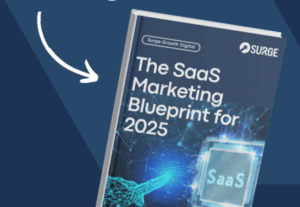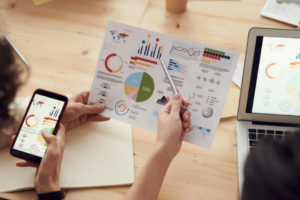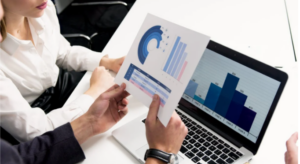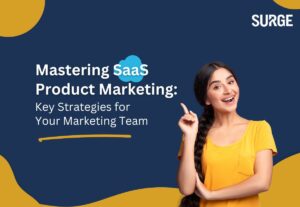What is a SaaS Sales Funnel?
A SaaS sales funnel is a step-by-step process guiding potential customers from the awareness stage to becoming loyal, paying customers. Unlike traditional sales funnels, the B2B SaaS marketing funnel integrates digital management services to focus on a longer customer journey, emphasising relationship building, trust, and ongoing value.
Key aspects include:
- Attracting leads through content marketing and SEO.
- Nurturing prospects with personalised email campaigns and case studies.
- Converting leads using product demos and free trials.
- Retaining customers through upselling and customer success strategies.

Understanding the Stages of the SaaS Sales Funnel
1. Top of the Funnel (TOFU): Awareness
This stage is about attracting potential customers. Use these tactics to build visibility:
- Content Marketing: Publish blogs, guides, and whitepapers targeting your audience’s pain points.
- SEO: Optimise your website with keywords like SaaS marketing funnel and scalable marketing strategies for SaaS.
- Social Media Campaigns: Leverage platforms like LinkedIn to showcase expertise.
2. Middle of the Funnel (MOFU): Consideration
At this stage, you nurture leads through the SaaS customer journey by providing educational resources and showcasing your product’s value:
- Email Nurturing: Build sequences to guide leads with insights tailored to their interests.
- Case Studies: Highlight how your product has helped similar businesses.
3. Bottom of the Funnel (BOFU): Decision
Convert leads into customers by focusing on trust and actionable steps:
- Product Demos: Provide hands-on experiences to showcase your product’s capabilities.
- Free Trials: Let potential customers experience the value firsthand.
4. Beyond the Funnel: Retention
Retention is key for SaaS growth. Keep customers engaged with:
- Customer Success Strategies: Regular check-ins and resources to help clients maximise ROI.
- Upselling Opportunities: Offer advanced features or higher-tier packages based on usage data.
How to Build a SaaS Sales Funnel from Scratch
Essential Components of a Successful SaaS Funnel
- Clear Goals: Define success metrics for each stage.
- Target Audience: Use data to create detailed customer personas.
- Automation Tools: Streamline processes with marketing platforms.
Effective Marketing Strategies for Building a SaaS Funnel
- Content Marketing: Build authority with in-depth resources and actionable guides.
- Paid Ads: Use PPC campaigns to target decision-makers in your niche.
- Collaborations: Partner with complementary SaaS businesses to broaden your reach.
Defining Funnel Stages for Your SaaS Business
Customise stages to align with your SaaS product. For example:
- Awareness: Blog posts and SEO.
- Consideration: Webinars and product comparisons.
- Decision: Limited-time offers on annual plans.
Optimising SaaS Sales Funnel Metrics
Key Metrics to Track
- Conversion Rates: Percentage of leads advancing to the next stage.
- Customer Acquisition Cost (CAC): Total cost of acquiring a customer.
- Churn Rate: Percentage of customers lost over time.
Improving Conversion Rates
- Simplify sign-up forms to reduce friction.
- Personalise communications based on user behaviour.
- Test different CTAs to determine effectiveness.
Using Analytics to Refine Strategies
- Monitor drop-off points in the funnel to identify weaknesses.
- Use tools like Google Analytics to track content performance.
- Implement A/B testing to optimise campaigns.
Best Marketing Strategies for SaaS Companies
Content Marketing for Lead Generation
High-quality content builds trust and drives organic traffic. Consider long-form blogs targeting B2B SaaS marketing funnel keywords.
Email Marketing Tactics
Segment your audience for tailored campaigns. Example strategies:
- Welcome sequences for new leads.
- Upselling emails for existing customers.
Utilising Free Trials
Highlight value during free trials with:
- Onboarding guides.
- Regular check-ins from the customer success team.

Creating a B2B SaaS Marketing Strategy
Aligning Sales and Marketing
Foster collaboration by sharing insights between teams. Use CRM tools to track progress collectively.
Crafting a Tailored Plan
Every SaaS business is unique. Customise your strategy based on target industries and personas.
Leveraging Customer Feedback
Encourage reviews and testimonials to build social proof and improve your offering.
Conclusion
Building and optimising a scalable B2B SaaS marketing funnel is essential for driving growth and customer retention. By implementing strategies tailored to each stage of the SaaS customer journey, you can improve conversions, reduce churn, and maximise ROI.
Contact Surge Growth Digital – The SaaS Marketing Agency Focused on Scaling Your Business – to take your SaaS marketing funnel to the next level.
FAQs
What is a SaaS marketing funnel?
A SaaS marketing funnel is a framework guiding potential customers from awareness to retention, optimised for the unique nature of SaaS products.
How to create a sales funnel for SaaS?
Start with a clear understanding of your target audience, create valuable content for awareness, nurture leads with personalised emails, and offer free trials to convert them.
What are the stages of the SaaS funnel?
The stages are awareness (attracting leads), consideration (nurturing leads), decision (conversion), and retention (customer success and upselling).
What is a marketing sales funnel B2B SaaS?
A B2B SaaS sales funnel is a strategic process tailored to attract, nurture, and convert business clients, focusing on long-term value and retention.






